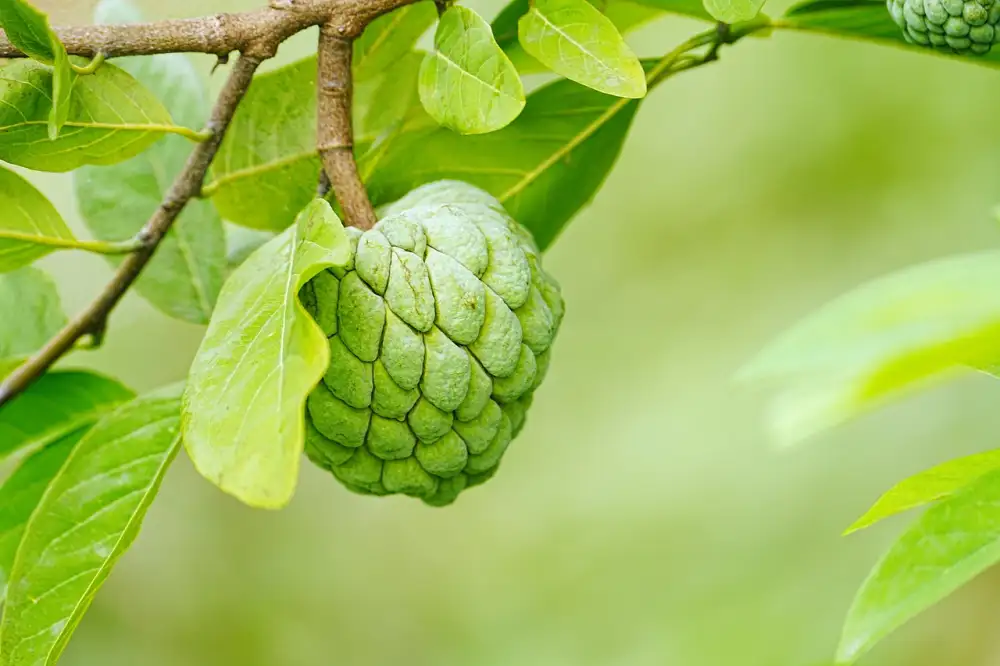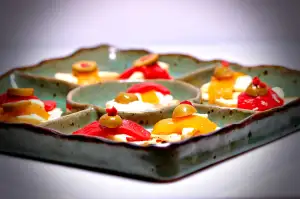Deliciously Creamy: Master the Art of Making Custard with Our Foolproof Recipe!

Custard is a classic dessert that has been enjoyed for centuries. Its smooth and creamy texture, combined with its rich and sweet flavor, makes it a favorite among dessert lovers. Whether served on its own or used as a filling in pies, tarts, or pastries, custard is a versatile treat that can be enjoyed in many different ways.
The basic ingredients for custard are simple: milk, eggs, sugar, and vanilla extract. However, the key to achieving the perfect custard lies in the technique of combining these ingredients and cooking them just right. With our foolproof recipe and step-by-step instructions, you'll be able to master the art of making custard and create deliciously creamy desserts every time. So let's dive in and explore the world of custard!
Ingredients for Custard
To make a deliciously creamy custard, you will need the following ingredients:
1. Milk: Use whole milk for a rich and velvety texture. You can also use a combination of milk and cream for an even creamier custard.
2. Eggs: Fresh eggs are essential for a smooth and silky custard. Use large eggs to ensure the right consistency.
3. Sugar: Granulated sugar adds sweetness to the custard. Adjust the amount according to your preference.
4. Vanilla Extract: This optional ingredient adds a delightful aroma and flavor to the custard. Use pure vanilla extract for the best results.
5. Flavorings (optional): You can experiment with different flavorings such as cinnamon, nutmeg, or even citrus zest to enhance the taste of your custard.
With these simple ingredients, you are ready to embark on your journey of making the perfect custard!
Step-by-Step Instructions for Making Custard
1. Heat the Milk: In a saucepan, heat the milk over medium heat until it starts to steam. Be careful not to let it boil.
2. Whisk the Eggs and Sugar: In a separate bowl, whisk together the eggs and sugar until well combined and slightly frothy.
3. Combine the Milk and Egg Mixture: Slowly pour the hot milk into the egg mixture, whisking constantly to prevent curdling.
4. Cook the Custard: Return the mixture to the saucepan and cook over low heat, stirring continuously with a wooden spoon until it thickens enough to coat the back of the spoon. This should take about 5-7 minutes.
5. Add Flavorings (optional): If desired, add vanilla extract or any other flavorings such as cinnamon or nutmeg at this stage, stirring well to incorporate.
6. Chill and Serve: Once cooked, remove from heat and let it cool slightly before transferring it to serving dishes or a large bowl. Cover with plastic wrap directly touching the surface of the custard to prevent a skin from forming. Refrigerate for at least 2 hours before serving chilled.
Enjoy your homemade creamy custard!
Heat the Milk
To make a deliciously creamy custard, the first step is to heat the milk. This process helps infuse the milk with flavor and ensures a smooth texture in the final custard.
Start by pouring the desired amount of milk into a saucepan. For a classic custard, whole milk works best, but you can also use heavy cream or a combination of both for an even richer taste.
Place the saucepan over medium heat and gradually bring the milk to a simmer. Stir occasionally to prevent scorching or forming a skin on top. Heating the milk slowly allows it to evenly distribute heat and prevents any curdling.
You'll know that the milk is ready when small bubbles start forming around the edges of the pan and it begins to steam. Avoid bringing it to a boil as this can cause the milk to scorch or create lumps.
Once heated, remove the saucepan from heat and set it aside while you prepare the other ingredients. The warm milk will be added gradually to whisked eggs and sugar mixture, creating a smooth and velvety custard base.
Whisk the Eggs and Sugar
To make a deliciously creamy custard, the next step after heating the milk is to whisk the eggs and sugar together. This will create a smooth and sweet base for your custard. In a separate bowl, crack the eggs and add the sugar. Use a whisk or fork to beat them together until they are well combined and slightly frothy. The sugar will dissolve into the eggs, creating a sweet mixture that will give your custard its signature flavor. Be sure to whisk vigorously to incorporate as much air as possible, as this will help create a light and silky texture in your custard. Once the eggs and sugar are thoroughly mixed, you're ready to move on to the next step of combining them with the heated milk.
Combine the Milk and Egg Mixture
Combine the Milk and Egg Mixture: Once the milk is heated, slowly pour it into the whisked eggs and sugar mixture. It's important to do this gradually to prevent the eggs from curdling. To combine them properly, you can start by adding a small amount of the hot milk to the egg mixture while whisking constantly. Then, slowly pour in the remaining milk while continuing to whisk until everything is well combined. This step ensures that the eggs are tempered and prevents any lumps from forming in your custard.
Cook the Custard
Once the milk and egg mixture is combined, it's time to cook the custard. Pour the mixture into a saucepan and place it over medium heat. Stir continuously with a wooden spoon or whisk to prevent any lumps from forming.
Continue cooking the custard until it thickens and coats the back of the spoon. This process usually takes about 10-15 minutes, but be sure to keep a close eye on it as it can thicken quickly towards the end.
To test if the custard is ready, run your finger along the back of the spoon. If a clear line remains without any liquid running into it, then your custard is perfectly cooked.
Be careful not to let the custard boil as this can cause it to curdle. If you notice any signs of curdling, immediately remove the saucepan from heat and vigorously whisk until smooth.
Once cooked, remove the saucepan from heat and transfer the custard into a bowl or individual serving dishes. Let it cool for a few minutes before covering with plastic wrap directly on top of the custard's surface to prevent a skin from forming.
The hot custard will continue to thicken as it cools down. Once cooled to room temperature, refrigerate for at least 2 hours or until chilled and set.
Now that you've mastered cooking custard, you're ready to move on to adding flavorings or enjoying it as is. Get creative with additions like vanilla extract, grated nutmeg, caramel sauce, or even fresh fruit compote. The possibilities are endless!
Remember that practice makes perfect when it comes to making custard. Don't be discouraged if your first attempt isn't flawless – just keep trying and soon you'll become an expert at creating this deliciously creamy dessert!
Add Flavorings (optional)
Once you have cooked the custard to perfection, it's time to add some delicious flavorings to take it to the next level. While classic vanilla is always a crowd-pleaser, don't be afraid to get creative and experiment with different flavors.
One popular option is adding a hint of almond extract for a subtle nutty taste. Alternatively, you can infuse the custard with a touch of citrus zest such as lemon or orange, which adds a refreshing twist. For those who love indulgence, try incorporating melted chocolate or cocoa powder for a rich and decadent chocolate custard.
If you're feeling adventurous, consider adding spices like cinnamon or nutmeg for a warm and comforting flavor profile. You can also explore using extracts like coconut or maple for an exotic twist. The possibilities are endless!
Remember, when adding flavorings, start with small amounts and gradually increase until you achieve your desired taste. Be cautious not to overpower the delicate custard base.
By experimenting with different flavor combinations, you can create unique and tantalizing custards that will impress your family and friends. So go ahead and unleash your creativity in the kitchen!
Next up in our article: "Chill and Serve". Stay tuned!
Chill and Serve
Once the custard has cooked to perfection, it's time to chill and serve. This step is crucial for achieving that creamy texture we all love. Carefully transfer the custard into individual serving dishes or a large bowl if you prefer to serve it family-style. Cover the dishes with plastic wrap, making sure it touches the surface of the custard to prevent a skin from forming. Place the custard in the refrigerator for at least 2 hours, or until it is completely chilled.
When you're ready to serve, remove the custard from the fridge and uncover it. You'll be greeted with a smooth and velvety dessert that is simply irresistible. For an extra touch of elegance, you can garnish each serving with a sprinkle of ground cinnamon or grated chocolate. Custard can be enjoyed on its own or paired with fresh fruits, such as berries or sliced bananas.
Remember, custard is best served chilled, so make sure to keep any leftovers refrigerated. It can be stored for up to 3 days, but trust us, it's unlikely there will be any left after your first taste!
Now that you've mastered the art of making custard, get creative with your flavorings and toppings. Try adding a splash of vanilla extract for classic vanilla custard or experiment with different extracts like almond or coconut for unique flavors. You can also infuse your milk with spices like cinnamon sticks or cardamom pods before heating it up for an extra layer of complexity.
Whether you enjoy custard as a comforting dessert on its own or use it as a base for other delectable treats like tarts or trifles, this versatile dessert will surely impress your friends and family. So go ahead and indulge in the creamy goodness of homemade custard – you deserve it!
Tips and Variations for Making Custard
1. Use a heavy-bottomed saucepan to prevent the custard from scorching during cooking.
2. To avoid curdling the eggs, gradually add the hot milk to the egg mixture while whisking constantly.
3. For a richer flavor, substitute some of the milk with heavy cream or half-and-half.
4. Experiment with different flavorings such as vanilla extract, almond extract, or even a splash of liqueur for a unique twist.
5. To infuse additional flavors into your custard, steep herbs or spices in the milk before heating it.
6. For a smooth and silky texture, strain the custard through a fine-mesh sieve before chilling.
7. If you prefer a thicker consistency, increase the number of egg yolks in the recipe.
8. For a lighter version, use low-fat milk or substitute part of it with coconut milk or almond milk.
9. Serve custard on its own or use it as a base for desserts like fruit tarts, crème brûlée, or trifle.
10. Get creative and experiment with toppings such as fresh berries, caramel sauce, chocolate shavings, or toasted nuts to enhance the presentation and taste of your custard creations.
With these tips and variations in mind, you are now equipped to master the art of making deliciously creamy custards that will impress your family and friends!
In conclusion, mastering the art of making custard is easier than you think! With our foolproof recipe and step-by-step instructions, you can create a deliciously creamy custard that will impress your friends and family. Whether you enjoy it on its own or use it as a base for other desserts, custard is a versatile and decadent treat. So why not give it a try? Get creative with flavors and toppings, and indulge in the rich and velvety goodness of homemade custard. Your taste buds will thank you!
Published: 14. 01. 2024
Category: Recipes



